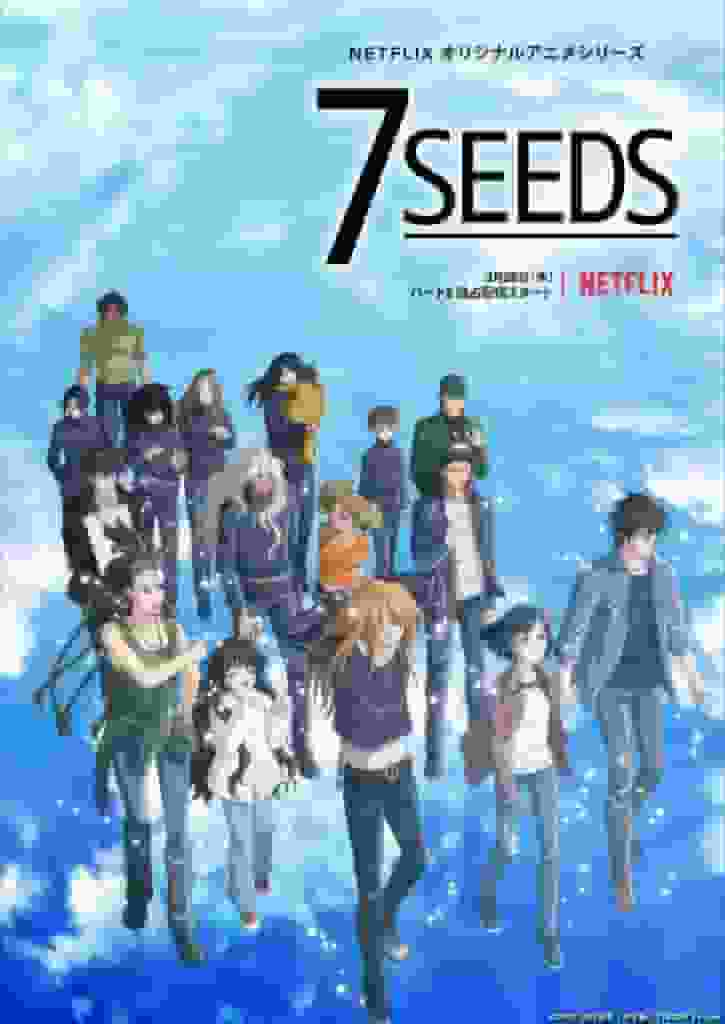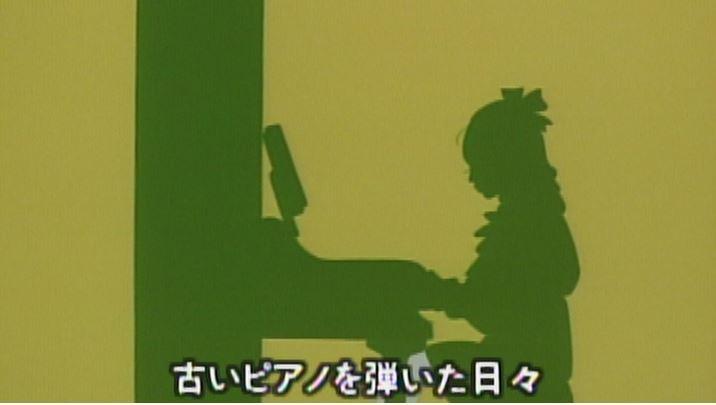Kojiki Monogatari: The Descent of the Grandson of Heaven: A moving and highly acclaimed experience of the world of mythology through animation

Tales of the Kojiki: The Descent of the Heavenly Grandson - Recreating a timeless mythReleased on January 1, 1958, "Kojiki Monogatari: Tenson Korin no Maki" is an animation work jointly produced by Chiyogami Eigasha and the Association of Shinto Shrines, depicting the descent of the heavenly grandson, an important episode in Japanese mythology. This work was produced as an original animation and is known for its beautiful reproduction of the world of mythology. Below, we will provide a detailed review and recommendation of this work. Overview"The Tale of the Kojiki: The Descent of the Heavenly Grandson" is a one-episode short animation, and its release media is listed as "other." It was directed by Chiyogami Eigasha and the Association of Shinto Shrines, and produced by Chiyogami Eigasha and the Association of Shinto Shrines. It was planned by Mitsumasa Shomoto, and the music was by Aohiro Usuda and Kozaburo Hirai. storyThis work depicts one of the most important episodes in Japanese mythology, the descent of the heavenly grandson. It tells the story of Ninigi-no-Mikoto, the grandson of Amaterasu Omikami, descending from Takamagahara to Ashihara no Nakatsukuni. Ninigi-no-Mikoto receives the Three Sacred Treasures from Amaterasu Omikami and is entrusted with the governance of the earth. This story symbolizes the origins of Japanese mythology and history, and is characterized by sacred rituals and beautiful depictions of nature. Animation Features"Kojiki Monogatari: Tenson Korin no Maki" was produced using animation technology from the 1950s. Although there were limitations to the technology at the time, various ingenious efforts were made to beautifully recreate the world of myth. In particular, the scene of Tenson Korin, in which Ninigi-no-Mikoto descends from the heavens, is depicted in a fantastical way, creating a visual impact. Furthermore, the costumes of the gods and the depiction of the background are also detailed, creating a sacred atmosphere. musicThe music was composed by Aohiro Usuda and Kozaburo Hirai, and plays an important role in enhancing the sacred atmosphere. In particular, the scene of the descent of the heavenly grandson features solemn music, which, combined with the visual beauty, creates a moving scene. In addition, the sounds of traditional Japanese instruments are used in the scenes of conversations between the gods and rituals, deeply expressing the worldview of Japanese mythology. Cultural significance"The Tale of the Kojiki: The Descent of the Heavenly Grandson" is an important work for passing on Japanese mythology and culture to future generations. In particular, the episode of the descent of the heavenly grandson symbolizes the origins of Japanese history and culture, and many people can understand its significance through this work. The fact that the Association of Shinto Shrines was involved in the production also shows that this work has religious significance. Through the reenactment of the myth, it also has educational value in respecting Japanese traditions and beliefs and passing them on to the next generation. Ratings and Recommendations"Kojiki Monogatari: Tenson Korin no Maki" was produced using the animation techniques of the 1950s, and its beauty and sacred atmosphere still fascinates many people today. It is a must-see film, especially for those interested in Japanese mythology and culture. It is also a useful educational tool for teaching children about Japanese history and traditions. This work has an exquisite harmony between visual beauty and music, and realistically recreates the world of mythology. In particular, the scene of the descent of the heavenly grandson is moving, and no matter how many times you watch it, you will find something new. In addition, the depiction of the gods' costumes and the background is detailed, giving you a sacred atmosphere. The recommended points are as follows:
"The Tale of the Kojiki: The Descent of the Heavenly Grandson" is a must-see for anyone who loves Japanese mythology and culture, and its beauty and sacred atmosphere still fascinates many people today. Please try to feel the history and traditions of Japan through this work. Supplementary Information"The Tale of the Kojiki: The Descent of the Heavenly Grandson" was released in 1958, and since then, advances in animation technology have made it possible to create more realistic visuals. However, the sacred atmosphere and beauty of this work are still loved by many people today. The fact that the Association of Shinto Shrines was involved in the production also shows that this work has religious significance. This work has an exquisite harmony between visual beauty and music, and realistically recreates the world of mythology. In particular, the scene of the descent of the heavenly grandson is moving, and no matter how many times you watch it, you will find something new. In addition, the depiction of the gods' costumes and the background is detailed, giving you a sacred atmosphere. The recommended points are as follows:
"The Tale of the Kojiki: The Descent of the Heavenly Grandson" is a must-see for anyone who loves Japanese mythology and culture, and its beauty and sacred atmosphere still fascinates many people today. Please try to feel the history and traditions of Japan through this work. |
<<: Impressions and reviews of "Let's All Sing Together": A harmony of fun and emotion
>>: "The Adventures of the Mole" review: An underworld adventure and a touching story
Recommend
A dog-protecting demon wielding a lightsaber kills four enemies in a star-studded war in John Wick 3
Recently, the foreign master "ImmersionVFX&q...
Concept art of the Chinese-New Zealand co-produced animated film "Legend of the Upright Elephant" released
The concept design of the first co-produced anima...
Sebastian the Winter Soldier runs naked on the streets of Greece with the heroine in a new film
The set photos of the romantic film "Monday&...
Thoughts and reviews on episode 12.5 of "Sekaiichi Hatsukoi": What is the appeal of this special edition?
Detailed review and recommendation of "Sekai...
"Investiture of the Gods: Part 1" box office exceeds 2 billion, Yin Jiao Dharma Image concept design released
According to Maoyan Professional Edition data, th...
The magical animated film "Children of the Sea" will be released on June 7! Hisaishi Joe will be in charge of music production
The fantasy animated film "Children of the S...
"Red River" reverses box office decline and temporarily tops the Spring Festival box office! Zhang Yimou breaks the record
As of 0:10 a.m. on January 25, the total box offi...
Actor Kang was sentenced to one year in prison, Marvel cut off cooperation with him at lightning speed
Just hours after MCU actor Jonathan Majors was fo...
The appeal and reviews of Suite PreCure♪: Impressions and recommended points of the 8th installment of the PreCure series
Suite PreCure♪ - Harmony of Music and Friendship ...
The animated film "The Lord of the Rings: The Battle of Rohan" is confirmed to be released at a later date
On November 14, Warner Bros. announced that the a...
Jim Carrey enjoys the filming of Sonic the Hedgehog 3
Sonic the Hedgehog 3 is fast approaching the fini...
The famous manga "Death Office" live-action drama has released many characters and imagined the world after death
The famous comic book "Death Office" th...
"Tokyo Magnitude 8.0": A moving story about the horror of the earthquake and the bond between family members
Tokyo Magnitude 8.0 - A realistic depiction of th...
Big boss daughter appears! New characters announced for "JoJo's Bizarre Adventure: Golden Wind"
The latest season of the TV animation "JoJo&...
Date A Live III Review: A Captivating Story and Character Evolution
"Date A Live III": A date with a spirit...









